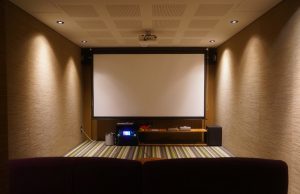When you scale your business, it’s all about getting your message in front of more eyes. That’s the easy part. The hard part is getting that message out there without your brand becoming something it never intended to be. Somewhere between your first campaign and trying to acquire millions of new customers, things go awry. Your ads appear in places you never wanted them to. The message is diluted. The visual appeal that took years to cultivate becomes cookie-cutter.
This is where a lot of brands get stuck, wanting to grow, but fearing that in doing so, they’ll become just another faceless avatar in a landscape of digital clutter. And you know what? They’re right. Many brands have successfully scaled their advertising only to become just as anonymous as their competition.
But scaling and maintaining control aren’t mutually exclusive. With the right systems and the right infrastructure, they work hand in hand.
The Control Challenge Every Advertiser Faces
Here’s the deal. A brand starts off doing all of its own advertising with great care. One platform, one campaign at a time, reviewing each creative, selecting placements. It works because each detail is within their control.
Then they need to shift gears to grow. They need more placements and more audiences with multiple campaigns running at once. What worked when they had one dedicated team per placement goes out the window. They need to stay small and controlled, or huge and hope standards slide.
Most brands assume this is the case; that there’s no getting around staying within parameters for control and then limiting growth or scaling too quickly where brand equity inevitably gets watered down. But this is a false binary borne from two brands attempting to scale the wrong way.
Where the Change Occurs
Where it can change is when there’s infrastructure in place to accommodate scaling without you sitting there closely watching every impression sent or delivered in a live space. Professional display ad networks exist for this purpose and provide the necessary fabric to make things happen on the level you want while maintaining guardrails that ensure your brand stays intact.
The accessibility makes sense. When you need to reach more people and beyond one controlled setting (think thousands of websites), your brand standards need to be held with accountability on an automatic level. For your ads only to appear on appropriate websites, display as they should intended across various channels and maintain experiential value as desired.
Without the infrastructure to do so, you’re left either manually checking (not scalable) or hoping (which never works). There is no way for this kind of sentiment.
Brand Safety Is More Than Avoiding Bad Sites
Most people think brand safety is simply keeping your ads off unseemly websites. It’s partially true – but it’s so much greater than that. It’s about experiential control – where your message manifests, who’s experiencing it, and at what value.
A luxury brand doesn’t just want its ad next to adult content; it wants to avoid bargain deal sites and low-quality content farms, let alone anything that causes cognitive dissonance with its branding. A tech company may want to avoid conspiracy theorist pages regardless if it’s safe content – and a healthcare brand has to be careful of appearing next to medical misinformation.
These are subtleties that require high-tech filters and classifications that go well beyond simple blacklists at this point. Modern networks categorize publishers across hundreds of categories, allowing brands to create extensive lists about where their branding should and shouldn’t exist.
The Creative Control Concern
Another concern about maintaining control when scaling involves creative execution. When you’re running ads across hundreds or thousands of placements, it’s difficult to keep everything looking the same from every angle.
Different sizing. Different devices. Different experiences – each tiny element provides the opportunity for something to go wrong with brand perception. A cropped logo will look inaccurate; a different rendering color will misrepresent design; copy that looks amazing fit for fit can look cramped if sized down too much.
Quality networks help provide helpful standards that maintain consistency through potential interventions like dynamic creative optimization that adjusts what you’ve provided as needed but maintains brand integrity from an aesthetic perspective.
Or template systems that make sure from variation to variation, it looks like your brand.
The option is exhausting manual variations or poorly sized/upscaled/downscaled options that look so ugly no one would want them as their own. Neither promotes the brand presence necessary for effective scaling.
Audiences Control More Than People Realize
To scale effectively means reaching more audiences – but not all audiences are the right fit for your company. A critical distinction exists between “more people” versus “more of the right people.”
Bad scaling means more eyeballs on whatever you’re doing; good scaling means more eyeballs on what makes sense for your operating capabilities. That requires levels of sophistication beyond basic demographic monitoring.
Modern networks offer multilayered targeting capabilities that help tailor the audience through geographic targeting, contextual targeting, device targeting and more that ensure the people getting ads are those who actually could be potential customers who make sense given branding ability.
Because each impression drives brand perception; if a luxury product keeps getting shown to cheaper consumers, it’s not only wasting marketing budget but driving down brand positioning perception even lower than if scale were nonexistent.
Real-Time Optimization With Your Standards Intact
Where this gets interesting is once you launch campaigns on a network; they allow you to keep optimizing without losing sight of your branding ambitions.
Algorithms can test different placements, variants, segments – but they do so within your guidance parameters which means brand safety standards are upheld, as are creative adherence goals and audience targeting remains fine-tuned.
This is where it’s a win. You get not only efficiency and performance-upgrading metrics that would be otherwise impossible, but you never risk the necessity of branding control that matters most. The system is working within guidelines you’ve provided instead of running amok for any click available.
Transparency Matters
None of this matters without visibility into what’s actually happening so reporting and transparency go hand-in-hand with maintaining control while scaling.
You need to know what’s where, who’s seeing it, how it’s performing across different avenues – not just aggregate numbers but collated breakouts that run preliminary investigations on slight-in-difference problems before they become a brand crisis.
Good networks provide said reporting where every impression lives – what user experience was experienced – and how different splits performed as necessary breakdowns for those looking to dedicate their time with pride rather than blindly trusting systems they’re ineffective at understanding faster than they could produce problems.
Better Brands Scale Because They Want Them To
The brands that scale best are those who take their advertising infrastructure as seriously as product development or customer service endeavors operate. They see value in appreciating more people if they receive the consistent, professional space that’s in line with business integrity whenever possible.
Display networks who prioritize brand safety give businesses access to scalable up fronts without fear of wanting smaller means or watered-down branding operations. Instead, businesses can thrive by expanding their reach while keeping those standards that made them capable of scaling in the first place.
Because this isn’t just better marketing – it’s better business.














